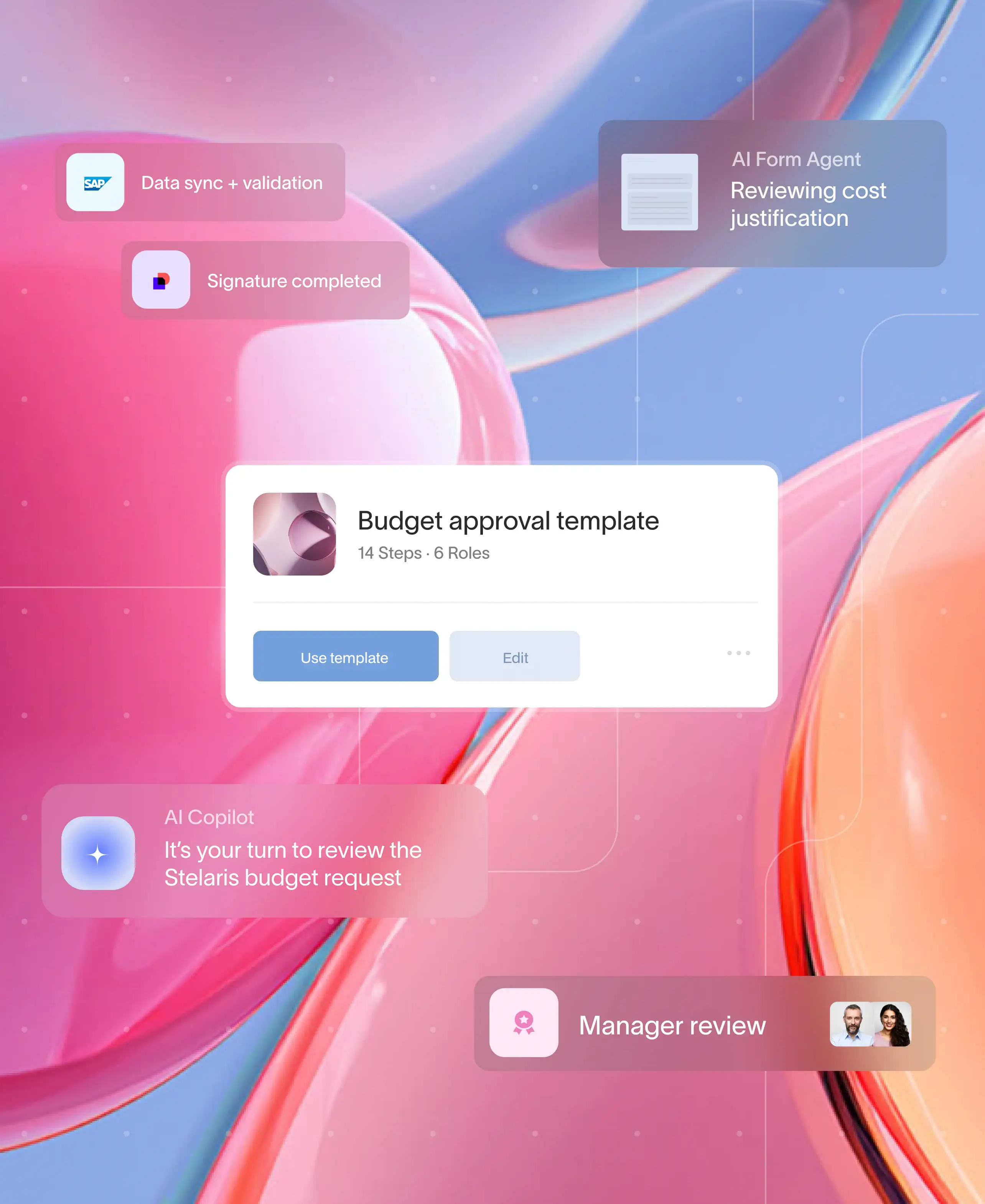
Efficient client onboarding is critical for building a strong and lasting relationship with your customers. The onboarding process sets the tone for future interactions, impacting client satisfaction and retention. An organized, well-structured client onboarding form can make the process seamless, ensuring all necessary information is collected at the start, reducing back-and-forth communication. This blog explores the importance of a client onboarding form, what it should include, and best practices to ensure a smooth onboarding experience.
What is a client onboarding form
A client onboarding form is a structured document that businesses use to gather essential information from new clients during the onboarding process. It simplifies data collection and ensures you obtain all the necessary details to begin a client relationship smoothly. Whether used by a marketing agency, a real estate firm, or a bookkeeping firm, this form acts as the foundation of client communication, outlining expectations and helping avoid unnecessary delays.
Importance of a client onboarding form
A client onboarding form is more than just a checklist. It’s a comprehensive tool that enhances client experience and operational efficiency by:
- Saving time: Collecting all essential information upfront avoids delays caused by multiple follow-up emails or calls.
- Setting clear expectations: It helps establish transparency by outlining both the client's and the business's roles, ensuring no misunderstanding.
- Standardizing processes: With an onboarding form, businesses can maintain consistency across clients, ensuring a professional, repeatable onboarding experience.
- Ensuring compliance: It ensures that all required documentation and client information is collected to meet regulatory requirements, reducing risk.
Building a client onboarding form: key elements for success
A well-designed client onboarding form captures all the necessary details to ensure a smooth start to your relationship with new clients. Whether you’re creating a new client onboarding form or refining an existing one, having clear, organized sections helps avoid unnecessary delays and miscommunication. While the specifics may vary depending on the type of business, the key elements generally remain the same. Below is a breakdown of what a customer onboarding form should include:
Basic client information
This section of the new customer onboarding form covers essential details like the client’s full name, contact information, business name (if applicable), and job title for B2B clients. It also asks for the client's preferred communication channels, helping you streamline interactions throughout the project. Accurate basic information is crucial for smooth communication, invoicing, and legal matters.
Project or service details
In any client onboarding form, capturing the client’s project goals, budget expectations, and deadlines is essential. By understanding these elements upfront, you ensure alignment between the client’s expectations and your services, minimizing miscommunication. Setting clear timelines also ensures that both parties stay on track and that project milestones are met.
Current tools or software
For a seamless onboarding experience, your client onboarding form should ask about any current tools or software the client is using. This information is particularly useful in industries like marketing, IT, or accounting, where tool integration is critical to smooth project execution.
Compliance and documentation
This section ensures that all necessary legal documents—such as contracts, NDAs, or regulatory forms—are submitted at the beginning. Gathering this information through the new client onboarding form prevents delays and ensures your onboarding process complies with industry-specific regulations.
Payment and invoicing information
Clarifying payment preferences is a crucial part of any client onboarding form. This section gathers the client’s preferred payment methods, billing cycles (whether monthly, quarterly, or per project), and any other financial details that should be agreed upon before work begins.
Onboarding preferences
To make the customer onboarding form process efficient, this section captures the client’s preferences for meeting schedules and times. Knowing their availability helps streamline the coordination of onboarding sessions. It also identifies the key point of contact on the client’s side to ensure smooth communication throughout the project.
Customer feedback and preferences
A new customer onboarding form should include a space for feedback preferences, allowing you to understand how the client wishes to communicate concerns or suggestions. This is also an opportunity to gather any prior knowledge or expectations they may have about the onboarding process, ensuring a more tailored and proactive experience.
Adaptability of the form based on client needs
The details included in the client onboarding form may vary depending on the industry, client size, and specific needs. For example, a marketing agency might focus more on project objectives and timelines, while a financial services firm may require detailed compliance documents. However, creating a standardized new client onboarding form template helps streamline the onboarding process while allowing for flexibility to adapt as needed.
Following up with clients to complete the client onboarding form is often necessary, as many clients may require reminders to submit their details. To simplify this, platforms like Moxo provide a solution that automates the collection of client information, reducing back-and-forth communication and ensuring data is securely gathered in a centralized platform.
Best practices for creating a client onboarding form
The client onboarding process can be overwhelming for clients, especially if they are unfamiliar with your system or services. A complex or lengthy onboarding form may add to their stress, which is why it's crucial to keep it as simple and straightforward as possible. The goal is to collect the necessary information without overloading the client, ensuring a smooth and positive experience from the start. Here are some best practices to consider when creating a client onboarding form:
- Keep it simple: Avoid making the form too long or complicated. Focus on essential information and avoid asking unnecessary questions.
- Be clear and concise: Ensure that the language used in the form is easy to understand, avoiding technical jargon that might confuse the client.
- Use conditional logic: For digital forms, use conditional fields so that clients only answer questions relevant to their specific needs.
- Make it mobile-friendly: Since many clients may complete the form on a mobile device, ensure the layout is responsive and easy to navigate.
- Provide instructions: For sections that may need more context, offer brief instructions to guide the client through filling out the form correctly.
How Moxo simplifies the client onboarding form
Moxo provides a seamless solution for creating and managing client onboarding forms through its collaborative workflow platform. With Moxo, businesses can easily build customized client onboarding forms that securely collect important client data in a centralized platform. This ensures that all necessary information is gathered upfront, streamlining the onboarding process. Moxo’s workflow automation reduces the need for manual follow-ups, enhancing data accuracy and ensuring compliance.
Beyond just the form, Moxo simplifies the entire client onboarding process with workflow automation and collaborative tools. It allows businesses to automate repetitive tasks while maintaining a personalized, consultative approach, ensuring clients receive the attention and guidance they need. By integrating the form with the overall onboarding workflow, Moxo enables businesses to deliver a smooth, efficient, and tailored onboarding experience that fosters stronger client relationships from the very start.
Visit Moxo to get started today.
Conclusion
A well-structured client onboarding form is essential for any business looking to enhance customer satisfaction and streamline operations. By collecting key information at the beginning of the relationship, businesses can set clear expectations, avoid miscommunication, and improve project management. Leveraging a platform like Moxo to facilitate this process can further improve efficiency and ensure a smooth onboarding experience. Visit Moxo to get started today.
FAQs
What is a client onboarding form?
A client onboarding form is a structured document used to collect essential information from new clients during the onboarding process.
Why is a client onboarding form important?
A client onboarding form ensures that businesses gather necessary information upfront, setting expectations and creating a seamless experience for the client.
What should be included in a client onboarding form?
A client onboarding form should capture essential details such as client contact information, project objectives, budget, timelines, legal agreements, and payment preferences. Additionally, it’s important to include fields for any specific requirements or expectations the client may have, ensuring all necessary information is collected to set the project up for success.
How does Moxo help with client onboarding?
Moxo provides a comprehensive platform that streamlines and automates the entire client onboarding process. From gathering client information to managing tasks, approvals, and document submissions, Moxo ensures every step is seamlessly integrated. Its collaborative features enable businesses to guide clients through onboarding with real-time messaging, video meetings, and secure file sharing, all in one platform. Workflow automation eliminates repetitive tasks, while customizable onboarding playbooks ensure consistency. With built-in security and compliance features, Moxo enables businesses to deliver a personalized, consultative onboarding experience that is both efficient and secure.





